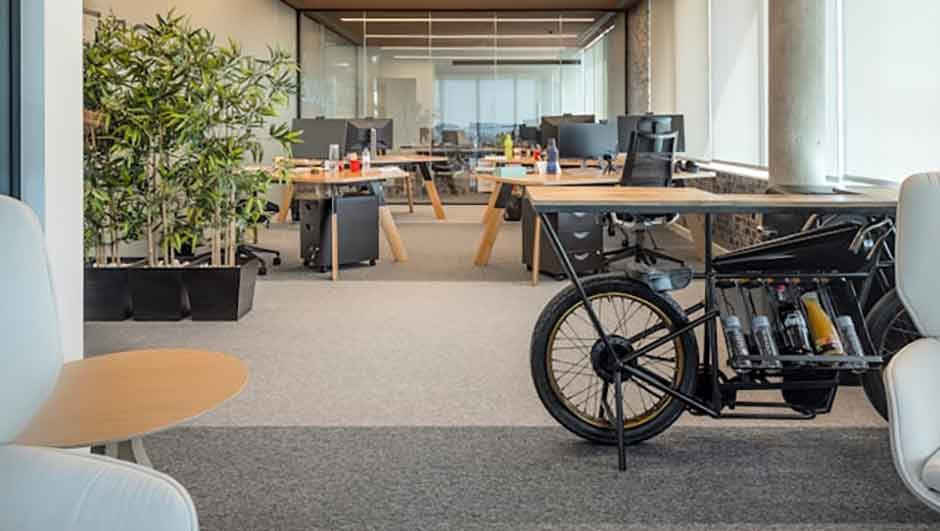A locked door is no longer sufficient. Office security in 2025 will go much beyond cameras and keys. The threats are more sophisticated, and the means to counter them have grown into sleek, linked systems that don’t just react—they think, learn, and forecast. Modern smart security is not about single-point defense. It is about layers of intelligent technology working together effortlessly. More than just deterrents, the modern office calls for accuracy, reactivity, and adaptable plans created for speed and precision.
Advanced Access Control Systems That Customize Entry Without Compromising Safety
Intelligent access systems with surgical accuracy for movement management have replaced conventional locks. Facial recognition, biometric scanning, and mobile-based credentials replace obsolete keycards and PINs. These devices instantaneously revoke or give access depending on each user’s rights as roles change or risks emerge. Offices increasingly include visitor control systems that pre-approve guests using cloud-based portals, alerting workers the moment a non-employee steps inside. Cleaning teams, suppliers, or part-time workers can be given time-specific access to help minimize needless exposure outside of business hours. Every door becomes a checkpoint enabled by analytics, tracking movement without interfering with business flow. As a result, you have complete control over who enters, when, and what areas they can access.
Real-Time Surveillance Powered by Artificial Intelligence and Smart Analytics
Not only are camera feeds in 2025 recorded but also actively interpreted. Before a crime starts, AI-enhanced video surveillance systems search behavior patterns for suspect activity. These devices know the difference between someone prowling restricted areas and an employee staying late. Heat sensors and motion mapping coupled with high-resolution video lets you track regions with limited visibility or blind spots. These intelligent solutions highlight anomalies promptly and raise alarms via mobile devices or command centers, therefore avoiding depending just on human monitoring. Apart from discouraging crime, this continuous monitoring enables quick internal reactions without waiting for external authorities.
Integrated Alarm and Response Systems That Communicate Across Multiple Channels
Alarms in 2025 do more than just make noise; they activate a series of automated defenses. Door contacts, motion sensors, and environmental alarms all feed into a centralized system responding in line with your specified rules. If illegal access takes place, the technology may lock down particular areas, alert building security, and even live video streaming to first responders en route. Alerts travel across many platforms, ranging from desktop prompts and intercom announcements to smartphone notifications. Under high-risk circumstances, this kind of coordination offers a tactical benefit by stopping escalation and ensuring staff safety. These systems also allow you to customize reactions depending on time, day, or evolving threat level.
Cyber-Physical Security Fusion That Defends Data and Physical Infrastructure Together
The most vulnerable entry point into an office is often a network rather than a door. Cybersecurity has evolved into a major component of building security as physical and digital surroundings mix. By safeguarding the hardware holding or transmitting private data, systems in 2025 prevent data leaks. Servers now live behind biometric doors and RFID-locked cabinets. Session monitoring and lockdown systems built into workstations turn on when unusual activity is found. Physical alerts and IT defenses are triggered by threats like ransomware or remote breaches, which isolate compromised segments and shut down access points before they spread. This all-encompassing strategy guarantees defense from both external offenders and internal mistakes, so safeguarding your whole business from all directions. Among the strongest defenses available today, commercial security solutions combine digital and physical security under one strategic umbrella to provide you with complete awareness and unmatched control over your office environment.
Predictive Risk Management Using Cloud-Based Intelligence and Pattern Recognition
Prevention in 2025 is not reactive but predictive. Modern cloud-based systems gather and examine massive amounts of data from several sites over several time frames. To project vulnerabilities, these systems spot trends in behavior, access records, and historical events. If one office in your network shows an attempted breach, others are immediately updated with pertinent information and strengthened alarms. Risk profiles evolve in real time based on personnel attrition, shift changes, or even weather conditions that boost theft attempts. With every new data point, this proactive approach helps you to neutralize risks before they are carried out, therefore improving your procedures. Predictive systems learn from every action instead of waiting for a loss to occur so that your reaction is always one step ahead of the threat.
Conclusion
Smart security in 2025 is no longer an afterthought; it is the core of how modern offices operate and thrive. The best defenses prevent, adapt, and outsmart rather than only identify. Your office becomes more than just sheltered when linked systems observe, learn, and act in harmony. It becomes prepared. These modern security technologies not only guard against threats but also identify possible risks before they become problems.






